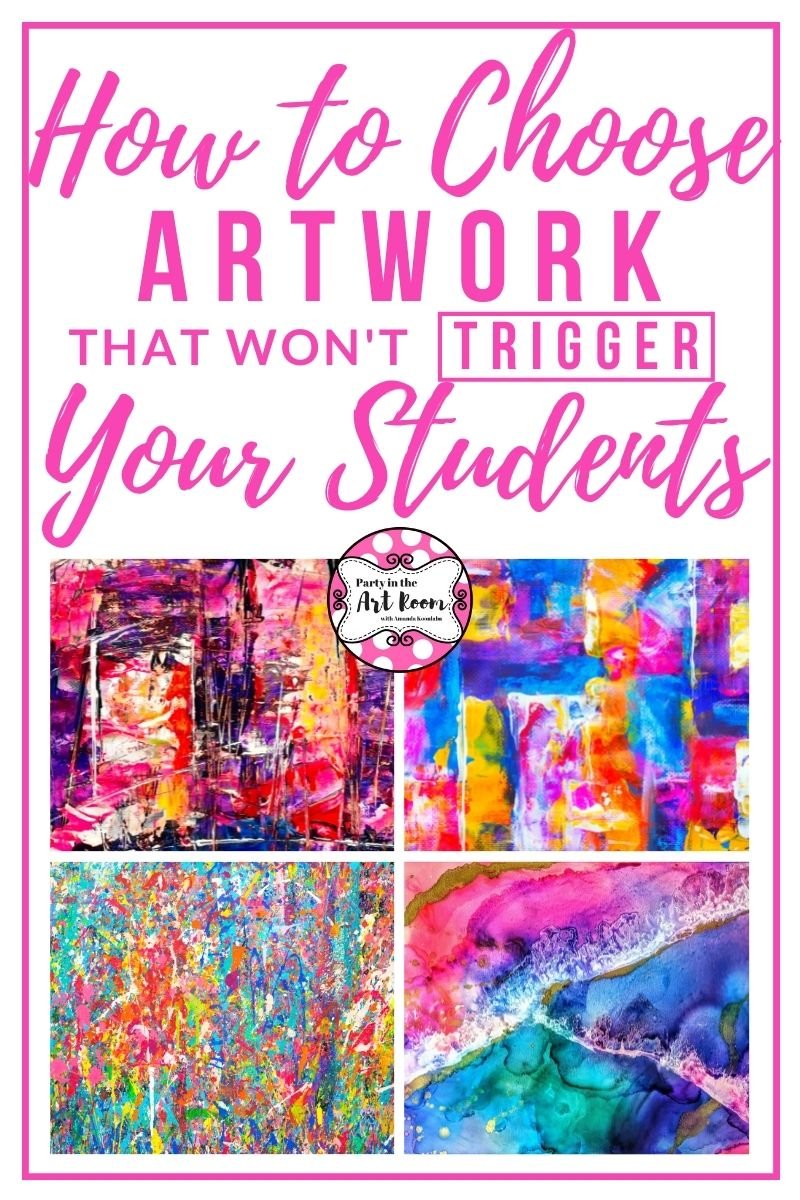How to Choose Artwork That Won’t Trigger Your Students
A Short Guide to Trauma, Triggers, and Artwork
It’s an ordinary Tuesday, and you’re in your art class. As you show your students an art print of a beautiful lake, one of them has an emotional reaction. At this point, it’s no longer visual learning. Your student is reliving the most traumatic moment of their life. Perhaps they almost drowned or lost a loved one to drowning.
You couldn’t have known that, but you can recognize and address it. This is a dramatic scenario, but triggers and responses vary. Others can be more subtle. Kristin Van Marter Souers and Pete Hall’s book Relationships, Responsibility, and Regulation is the best tool for dealing with triggers amongst students.
So, how do you choose art prints that won’t trigger your students? The truth is that you don’t. We can't avoid all triggers for students because it's not in our power. We don't know what triggers each student in our care, so we can’t always avoid them.
We can avoid general universal triggers like violence, but we can’t avoid the more subtle ones. However, you could rely on knowing your students and their surroundings. You can help students work through their triggers.
Create a safe space for students
Create a safe nest for students so that they learn and thrive. You want them to have a soft place to land if they need it. That's the heart of helping students work through their triggers and trauma.
We need to accept that trauma is real, and it affects us differently. Trauma is more common than we’re willing to admit. And our schools need to be prepared to support students because they can't learn if they don't feel safe.
Safety is a fundamental right.
As educators, it’s our job to put effort into the students’ physical, emotional, and mental safety. That starts with realizing that our students have experienced trauma even if we don't know it. Therefore, we must do our jobs as educators and parents to prioritize their safety.
“If we don't feel safe, we can't lead, parent, teach, partner or learn effectively. Our need to feel safe supersedes everything else.” – Souers and Hall, Relationships, Responsibility, and Regulation: Trauma-Invested Practices for Fostering Resilient Learners.
Recognize trauma responses
Our students can have a flight, fight, or freeze response when triggered. So, you must be able to recognize the response as the result of a trigger. Kids are human beings dealing with difficult things.
Many of our students face situations at home that they can't escape. Some of these may be more traumatic than others. So, they may get triggered by a painting. Recognizing these responses can help you identify when a student is in emotional distress.
Recognizing the responses can help you understand what to do next.
It's equally important to remember that not everything is linear. We are complex individuals, and there's no “one size fits all” response to triggers. These experiences impact us differently. So, we must be flexible in the way we work with others.
Invest in meaningful relationships with students and parents
If you don’t have relationships with students and their families, you should start. That impacts how effective you are as an educator. It also impacts the students’ experience. Forming meaningful relationships with your students will help them feel safer in your classroom.
If you know your students and their community well, you’ll be able to choose appropriate artworks.
If a student is triggered by the artwork, you’ll be able to help them. You’ll have a relationship with that student because you have created a safe space for them. So, you help them understand what their responsibilities are in the situation.
It’s the students’ responsibility to recognize their feelings and their response to those feelings. However, you can teach students ways to help regulate their responses to triggers.
This book teaches us how to efficiently react to these situations. It teaches us to apply informed teaching practices.
Watch the video below to learn more.
Get the book mentioned in the article and video here. Also, check out these other works on the topic that I highly recommend.
Affiliate Disclosure: Party in the Art Room is supported by its audience. When you purchase through links on this site, a commission may be earned.





